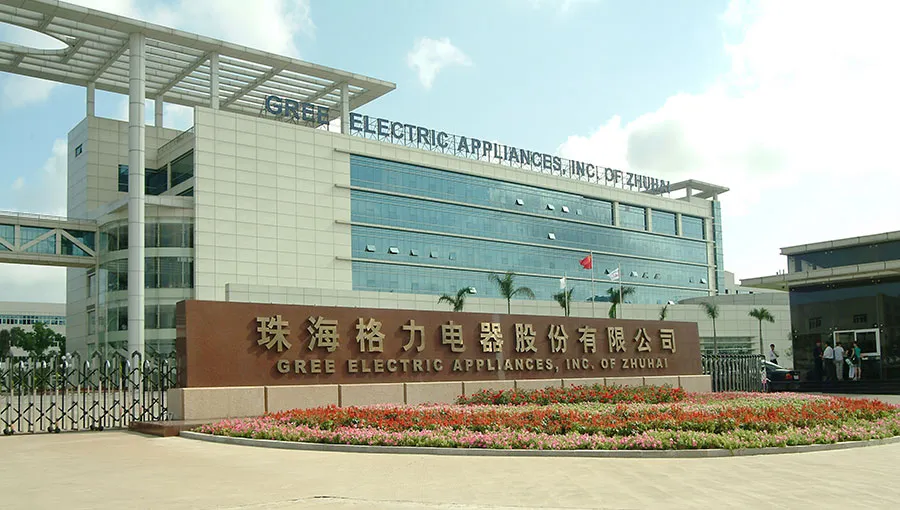Recently, China Unicom Guangdong Branch, together with Gree and Huawei, completed the first ever 5G LAN commercial test in the home appliance industry at Gaolan Port. This test pushed 5G LAN to the next level from technical standards to large-scale commercial use, providing a benchmark case for the digital transformation of home appliance manufacturing.
Figure 1-1 Gree Electric Appliances Inc. of Zhuhai

Exploring 5G applications to lay a solid footing for the innovative 5G+Industrial Internet solution
Gree is one of the leading appliance manufacturing enterprises in China, with cutting-edge product technologies and rich production experience. China Unicom Guangdong Branch and Gree started to explore 5G applications in October 2019. They signed onto the 5G network reconstruction and promotion service platform project for Industrial Internet enterprises proposed by Ministry of Industry and Information Technology (MIIT), where they built the first SA private network in Chinese smart manufacturing based on the MEC edge cloud, with the slicing-driven "5G+Industrial Internet" concept.
Fast-tracking smart upgrades to build a smart 5G LAN industrial park
In the conventional 5G-based production process of Gree, downlink packets for Programmable Logic Controllers (PLCs) and cameras have to be transmitted at layer 2. This requires AR routers, which increases device costs and results in complex networking. This begs the question: how can the 5G-based Industrial Internet architecture be simplified? 5G LAN offers Layer 2 communications, without the need to rebuilding the network topology, configurations, and applications.
In November 2022, China Unicom Guangdong Branch officially ran 5G LAN testing in Gaolan Port. This testing verified Ethernet session management, Layer 2 point-to-point, multicast, and broadcast communications between 5G terminals and servers. It also confirmed a reduced latency for packet transmission between terminals and apps. The verification indicates that 5G LAN enables the background servers to monitor cameras for flexible terminal management. Additionally, 5G LAN helps reduce hardware costs as well as simplify 5G reconstruction and maintenance in production lines. As such, terminals can be flexibly added or removed to adapt to various self-networking requirements in the production lines. Huawei has contributed to the transformation and upgrade of Gree and the construction of their smart industrial park.
Figure 1-2 5G LAN networking for Gree video data analysis

Figure 1-3 Onsite 5G LAN configuration

As digitalization continues, China Unicom Guangdong Branch is set to team up with top-class partners akin to Gree to further adopt 5G private networks in home appliance manufacturing. Together, they will build 5G fully-connected factories in the Industrial Internet sector, and further facilitate digital transformation and upgrade across the home appliance manufacturing industry chain.

